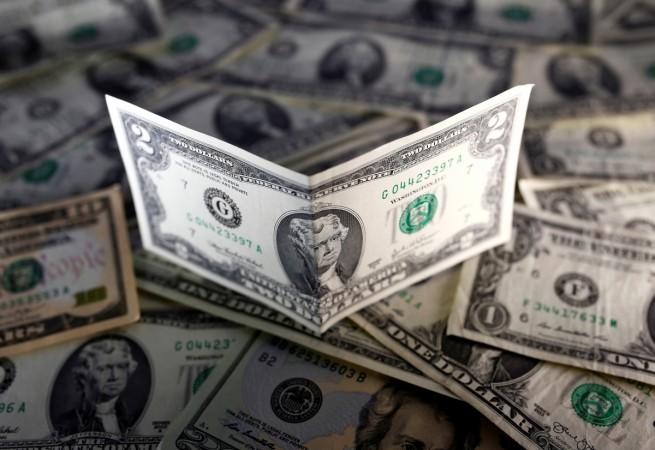
The US dollar slid in late trading on Tuesday as an inverted US Treasury yield curve sparked general concerns about a slowdown in US economic growth.
In late New York trading, the euro was down to $1.1341 from $1.1342 dollars in the previous session, and the British pound was down to $1.2717 from $1.2726 in the previous session, Xinhua news agency reported.
The Australian dollar was down to $0.7337 from $0.7348.
The US dollar bought 112.81 Japanese yen, lower than 113.68 Japanese yen of the previous session. The US dollar decreased to 0.9974 Swiss franc from 0.9988 Swiss franc, and it was up to 1.3247 Canadian dollars from 1.3210 Canadian dollars.
The dollar index, which measures the greenback against six major peers, was down 0.07 per cent to 96.9680.
Over the past five decades, an inversion of yield spread between the two-year and 10-year notes appeared ahead of every recession in the US.
Analysts cautioned that the latest inversion between short-dated and long-dated bonds signalled market expectations that US economic growth will slow down.
The recent broad sell-offs in the stock markets have prompted some investors to turn to the comparatively less risky US Treasury bonds and also increased demands for the greenback as a safe-haven currency because of its high liquidity.
However, analysts said as traders grew worried about sagging US growth, longer-dated Treasury bond yields have been sharply weighed down.









!['Had denied Housefull franchise as they wanted me to wear a bikini': Tia Bajpai on turning down bold scripts [Exclusive]](https://data1.ibtimes.co.in/en/full/806605/had-denied-housefull-franchise-they-wanted-me-wear-bikini-tia-bajpai-turning-down-bold.png?w=220&h=138)



